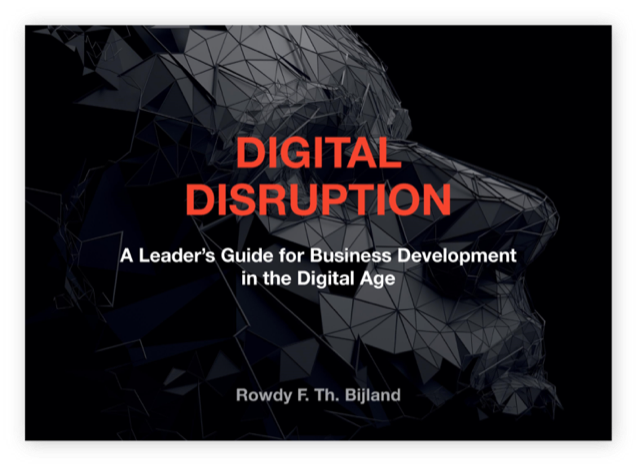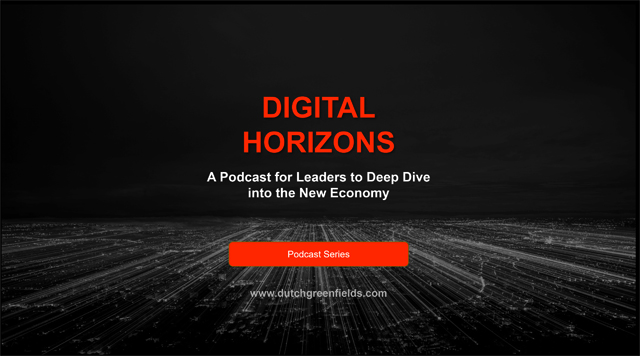Technology is often celebrated as the magic bullet for growth, innovation, and transformation. Yet, despite billions spent on digital tools, many organizations still struggle to realize measurable impact. Why? Because technology by itself does not create value — it only enables value when it is connected to a clear outcome, a defined need, and a purposeful capability.
When companies start with the tool instead of the problem, they end up investing heavily in platforms and systems that create cost without impact. This article unpacks the “technology-as-enabler” mindset, introduces the Technology Role Matrix, and explains how business leaders can ensure every digital investment contributes directly to business and customer outcomes.
Background & Meaning: Technology as an Enabler, Not a Solution
For decades, organizations have been chasing “best-of-breed” solutions — CRM, ERP, AI, RPA — believing that simply adopting the latest tool would guarantee success. Unfortunately, most of these large-scale technology projects underdeliver. The reason? Leaders confuse the means (technology) with the end (business value).
Modern digital leaders take a different approach. They flip the traditional logic and start from the outside in, following a structured path:
- Start with outcomes: What measurable improvements are needed — higher revenue, lower costs, better customer experience, reduced risk?
- Understand needs: What job is the customer or user trying to get done? What pain point are we solving?
- Design capabilities and processes: What must the organization be able to do differently to deliver those outcomes?
- Select technology: Which tools or platforms best enable these new capabilities?
This “needs → capabilities → technology” flow is the foundation of any successful digital transformation.
The Technology Role Matrix: Clarifying What Technology Really Does
Most transformation failures happen because teams use technology for the wrong purpose. The Technology Role Matrix helps categorize the role tech should play in each initiative. It forces clarity, prevents overengineering, and ensures governance and investment are right-sized.
|
Role |
What it means |
When to use |
Typical KPIs |
Governance & Cost |
|
Enabler |
Makes something possible that wasn’t before (e.g., real-time data sharing). |
When a new capability is prerequisite to strategy. |
Capability adoption, time-to-first-value. |
Moderate; focus on integration, security, change management. |
|
Accelerator |
Makes existing work faster or cheaper (e.g., workflow automation). |
When processes are clear and you need efficiency gains. |
Cycle time, cost per transaction, throughput. |
Light–moderate; ROI tracking and operational ownership. |
|
Differentiator |
Creates unique value customers will pay for (e.g., AI-driven personalization). |
When a competitive edge depends on unique experiences or models. |
Conversion, retention, NPS, revenue lift. |
Higher; product discipline, experimentation, IP protection. |
|
Utility / Commodity |
Standard functions every company needs (e.g., email, basic CRM). |
When a function is non-differentiating but essential. |
Uptime, cost per user, SLA adherence. |
Minimal; buy not build, optimize for total cost. |
How to use it:
Every project should fit primarily into one role. If you label everything a Differentiator, you’ll overengineer; if you label everything a Utility, you’ll underinvest and lose competitive edge.
The Outcome-First Stack: How Value Actually Happens
To translate this mindset into action, leaders can apply a simple Outcome-First Stack — a logical sequence from strategy to execution.
- Outcomes: Define tangible results (e.g., +10% customer retention, –15% service cost).
- Jobs-to-be-Done / Needs: Understand what the user is really trying to achieve (e.g., “get a refund without waiting”).
- Capabilities & Processes: Identify what the business must do differently (e.g., automated refund validation).
- Data & Policy: Define what data, rules, and guardrails are required.
- Technology Enablers: Select the tools that make steps 2–4 possible.
If you can’t clearly articulate steps 1–3, you’re not ready to invest in technology.
Why the Matrix Matters in Digital Transformation
Digital transformation is not just about technology — it’s about rethinking how the business creates and delivers value. The matrix:
- Aligns executives around why a tool exists and how it drives business outcomes.
- Prevents waste by avoiding unnecessary custom builds or redundant systems.
- Sets the right KPIs and governance for each type of technology investment.
- Speeds decision-making by clarifying trade-offs between risk, cost, and impact.
In essence, it creates a shared language for technology and business teams — turning tech decisions into strategic choices, not procurement exercises.
How Business Leaders Can Use This Principle in Practice
1. Start with a One-Page Outcome Brief
Define the outcome, hypothesis, target customer, and measurable success criteria. If the value story isn’t clear on one page, the project isn’t ready.
2. Classify the Initiative
Use the Technology Role Matrix to decide whether the project is an Enabler, Accelerator, Differentiator, or Utility.
3. Define Success Metrics Upfront
Align KPIs with the role.
- Enabler → capability adoption
- Accelerator → process efficiency
- Differentiator → market or revenue impact
- Utility → cost optimization and uptime
4. Right-Size Governance
Don’t overcomplicate small projects or under-manage strategic bets.
- Utility → off-the-shelf solution
- Accelerator → automate and optimize
- Enabler → focus on integration and data
- Differentiator → cross-functional innovation team
5. Stage Your Investments
Move ideas through POC → Prototype → MVP, validating feasibility, desirability, and value before scaling.
6. Instrument Everything
Track metrics monthly; adjust or stop projects that fail to deliver early results.
7. Prioritize Change Management
Technology adoption fails when people don’t use it. Communicate, train, and align incentives around value creation, not tool rollout.
Examples
Retail Grocery Chain – Turning Technology into a Differentiator
A major grocery retailer struggled with stockouts and long checkout lines. Instead of investing in generic automation tools, the leadership started by asking: What do our customers actually need?
- Outcome: Improve convenience and reduce friction in stores.
- Enabler: IoT shelf sensors and real-time inventory APIs that detect low stock instantly.
- Differentiator: Mobile app that allows shoppers to see exact aisle availability and book a 5-minute pickup window.
- Impact: +7% average basket size, –18% out-of-stock complaints, and +22% repeat visits.
By aligning technology to customer outcomes, the retailer didn’t just automate operations — it created a better experience that customers valued.
Global Insurer – Using Technology as an Accelerator
A global insurance company faced rising claim costs and slow cycle times. The instinct was to invest in a new AI platform. Instead, leaders applied the technology-as-enabler principle.
- Outcome: Reduce claim processing time and improve customer satisfaction.
- Accelerator: Workflow automation integrated with AI document triage to process claims automatically.
- Impact: First-contact resolution up 22%, cost per claim down 15%, and customer satisfaction increased significantly.
Here, technology wasn’t the goal — faster and better customer service was. The insurer used tech to accelerate a well-understood process, not to reinvent the wheel.
Benefits of the Technology-as-Enabler Mindset
- Higher ROI: Every tech investment is tied to a specific business outcome.
- Strategic Clarity: Teams understand where to differentiate versus where to standardize.
- Reduced Waste: Avoid building what should be bought or automating broken processes.
- Faster Results: Governance is right-sized; teams move faster with focus.
- Customer-Centricity: Solutions are grounded in real user needs, not features.
- Cultural Shift: Technology becomes a shared responsibility between business and IT, not a siloed function.
Outcomes First, Tools Second
Digital transformation succeeds not when you buy more tools, but when you connect technology directly to outcomes. Technology is a powerful enabler — but without clarity of purpose, it becomes an expensive distraction. When leaders start with business and customer needs, design the capabilities to meet those needs, and then choose technology to enable them, they transform digital investments into measurable impact. By adopting the Technology Role Matrix, organizations can strike the right balance between speed and discipline, between innovation and control. The best-performing companies today share one common trait: they treat technology as a strategic partner, not a shiny object. They understand that it’s not about the tool — it’s about the outcome. So before you invest in the next AI platform, CRM overhaul, or cloud migration, ask one simple question:
“What outcome are we enabling?”
If you can answer that clearly — and align every action around it — technology will stop being a cost center and start becoming the most powerful engine of growth, efficiency, and customer value in your business.
About Rowdy Bijland
Rowdy is a strategic and creative thinker. He acts as a digital business partner with the mission to support leaders, their teams and organizations, to drive digital business strategy, innovation and transformation execution, with the aim to maximize potential and to contribute to the creation of sustainable value and meaningful impact. He released his first publication “Digital Disruption: A leader’s Guide for Business Development in the Digital Age” available both as paperback and eBook in the shop. In addition, he released a digital masterclass “Leading Digital Disruption” on Udemy. He is facilitator, moderator and keynote speaker for companies and organizations. Furthermore, Rowdy offers 1:1 digital business coaching for leaders worldwide.
To connect with Rowdy, please follow him on Linkedin.







